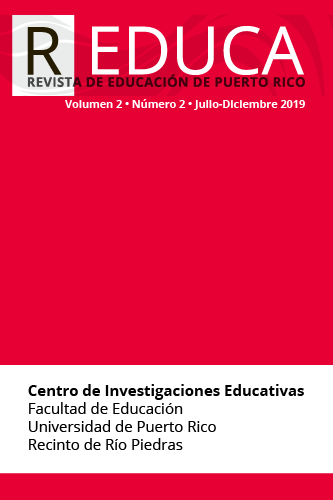Resumen
El sentido numérico se refiere a una colección de habilidades que desempeñan un papel central en la educación matemática en todos los niveles escolares. Su estudio se ha centrado principalmente en cuestiones numéricas relacionadas con la escuela primaria, y no hay consenso sobre su importancia en la educación matemática más allá de la escuela intermedia. Nuestra hipótesis afirma que el sentido numérico debe incluir mucho más que números, sus relaciones y operaciones, y que es esencial para que los estudiantes estén completamente preparados para emprender cursos de matemáticas a nivel universitario. Los alumnos deben desarrollar, a nivel escolar, modelos mentales robustos para las diversas acepciones de "número", tales como: las magnitudes, los sistemas numéricos, los procesos de medición y estimación, y las dimensiones algebraicas, variacionales y probabilísticas del número. Proponemos una taxonomía de los modelos útiles para desarrollar el sentido numérico y sugerimos ideas sobre cómo los maestros pueden usarla para traducir dichos modelos en estructuras mentales que ayuden a los estudiantes a construir la base para el estudio de las matemáticas en educación superior.
Citas
De Lange, J. (2003). Mathematics for literacy. In B. L. Madison (Ed.), Quantitative literacy: Why numeracy matters for schools and colleges? (pp. 3-6). Princeton, NJ: The National Council on Education and the Disciplines. Available at: http://www.maa.org/sites/default/files/pdf/QL/WhyNumeracyMatters.pdf
Gravemeijer, K. P. E. (1994a). Developing realistic mathematics education. Utrecht, Netherlands: CD-ß Press Freudenthal Institute.
Gravemeijer, K. P. E. (1994b). Educational development and developmental research in mathematics education. Journal for Research in Mathematics Education, 25(5), 443-471.
Freudenthal, H. (1973). Mathematics as an educational task. Dordrecht, Netherlands: Kluwer Academic Publishers.
Freudenthal, H. (1983). Didactical phenomenology of mathematical structures. Dordrecht, Netherlands: D. Reidel Publishing Company.
Freudenthal, H. (1991). Revisiting mathematics education: China lectures. Dordrecht, Netherlands: Kluwer Academic Publishers.
Freudenthal, H. (1999). Didactical phenomenology of mathematical structures. Dordrecht, Netherlands: Reidel Publishing Company.
Kieren, T. E. (1980). The rational number construct: Its elements and mechanisms. In T. E. Kieren (Ed.), Recent research on number learning (pp. 125-150). Columbus, Ohio: Information Reference Center, Ohio State University. (ERIC Document Reproduction Service No. ED212463).
Kindt, M. (2004). Positive algebra: A collection of productive exercises. Utrecht, Netherlands: Freudenthal Institute.
Kindt, M. (2009). Re(j)alistic math: On the occasion of ten years Isfahan Mathematics House. Nieuwe Wiskrant, 28(4), 41-45. Available at http://www.fi.uu.nl/wiskrant/artikelen/284/284juni_kindt.pdf
Kindt, M., Dekker, T., & Burrill, G. (2006). Algebra rules! Chicago, IL: Encyclopædia Britannica.
Marshall, S. (1989). Number sense: Retrospective paper. In J. T. Sowder & B. P. Schapelle (Eds.), Establishing foundations for research on number sense and related topics: Report of a Conference (pp. 40-42). San Diego, CA: National Science Foundation ERIC document ED317413.
Organisation for Economic Co-operation and Development. (2012). PISA (2012) Mathematics framework. Paris: Author. Available at http://www.oecd.org/pisa/pisaproducts/46961598.pdf
Resnik, L. (1989). Defining, assessing and teaching number sense. In J. T. Sowder & B. P. Schapelle (Eds.), Establishing foundations for research on number sense and related topics: Report of a Conference (pp. 35-39). San Diego, CA: National Science Foundation ERIC document ED317413.
Sowder, J. T., & Schapelle, B. P. (Eds.). (1989). Establishing foundations for research on number sense and related topics: Report of a Conference. San Diego, CA: National Science Foundation. ERIC document ED317413.
Steen, L. A. (2001). Mathematics and democracy: The case for quantitative literacy. Washington, DC: The National Council on Education and the Disciplines.
Steen, L. A. (2004). Achieving quantitative literacy: An urgent challenge for higher education. Washington, DC: The Mathematical Association of America.
Streefland, L. (1991). Fractions in realistic mathematics education. A paradigm of developmental research. Dordrecht, Netherlands: Kluwer Academic Publishers.
Tall, D. (1991). The psychology of advanced mathematical thinking. In D. Tall (Ed.), Advanced mathematical thinking (pp. 3-21). Dordrecht, Netherlands: Kluwer Academic Publisher.
Treffers, A. (1991a). Realistic mathematics education in the Netherlands, 1980-1990. In L. Streefland (Ed.), Realistic mathematics education in primary school. Utrecht, Netherlands: CD-ß Press / Freudenthal Institute, Utrecht University.
Treffers, A. (1991b). Didactical background of a mathematics program for primary education. In L. Streefland (Ed.), Realistic mathematics education in primary school. Utrecht, Netherlands: CD-ß Press / Freudenthal Institute, Utrecht University.
Trigueros, M. & Jacobs, S. (2008). On developing a rich conception of variable. In M. P. Carlson & C. Rasmussen (Eds.), Making the connection: Research and teaching in undergraduate mathematics education (pp. 3-13). Washington, DC: Mathematical Association of America.
Van den Heuvel-Panhuizen, M. (2000). Mathematics education in the Netherlands: A guided tour. Freudenthal Institute Cd-rom for ICME9. Utrecht, Netherlands: Utrecht University.
Van den Heuvel-Panhuizen, M. (2003). The didactical use of models in realistic mathematics education: An example from a longitudinal trajectory on percentage. Educational Studies in Mathematics, 54, 9–35.
Van Galen, F., Feijs, E., Figueiredo, N., Gravemeijer, K. Van Herpen, E., & Keijzer, R. (2008). Fractions, percentages, decimals, and proportions: A learning-teaching trajectory for grades 4, 5 and 6. Rotterdam, Netherlands: Sense Publishers.
El contenido que aparece en la Revista de Educación de Puerto Rico se distribuye gratuitamente y está disponible bajo las prácticas de acceso abierto, de acuerdo con la licencia de Creative Commons, Atribución-NoComercial 4.0 Internacional (CC BY-NC 4.0). Mediante estos principios, la revista y sus autores permiten a los lectores acceder, reproducir y compartir los textos completos de los artículos. Los usuarios deben dar crédito a los autores de forma razonable sin sugerir que tienen el apoyo de ellos. Bajo ninguna circunstancia, los lectores pueden hacer uso de los contenidos con propósitos comerciales. Los autores conservan los derechos de autor sobre sus trabajos.

